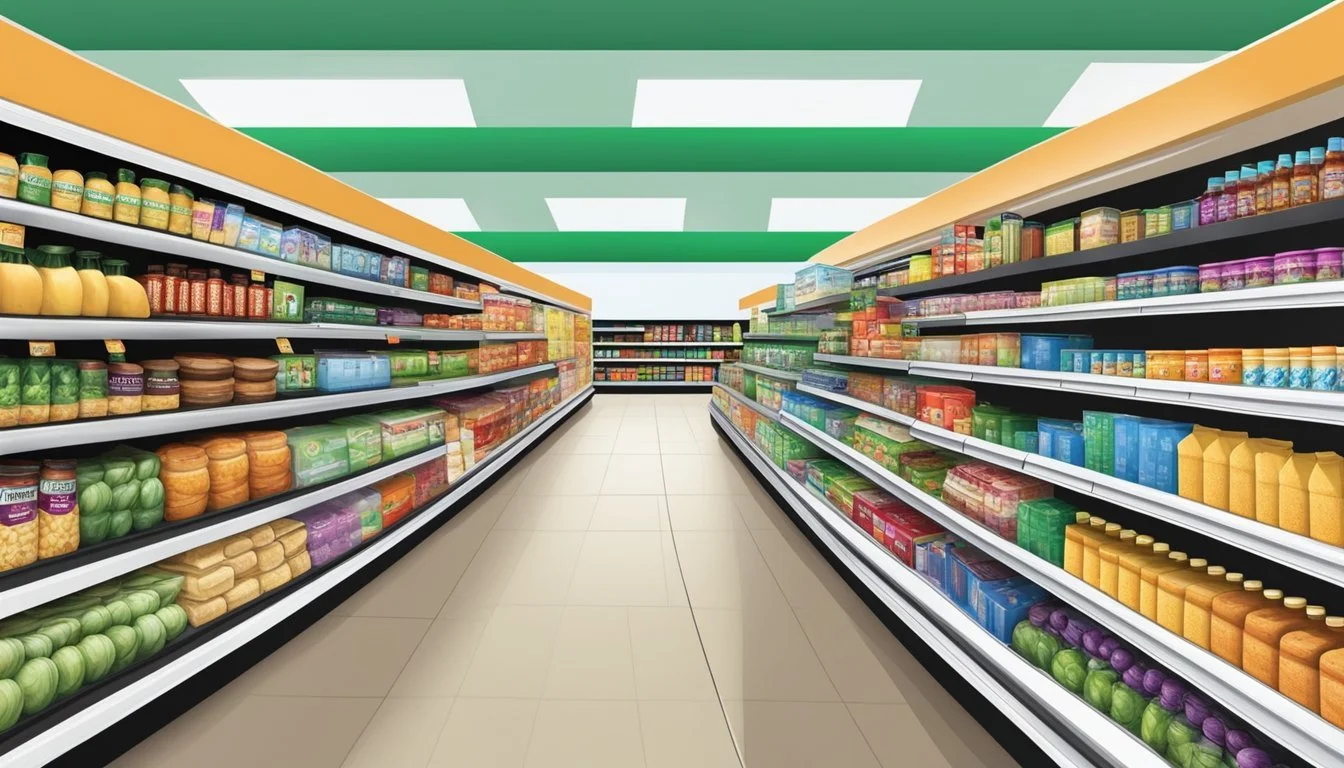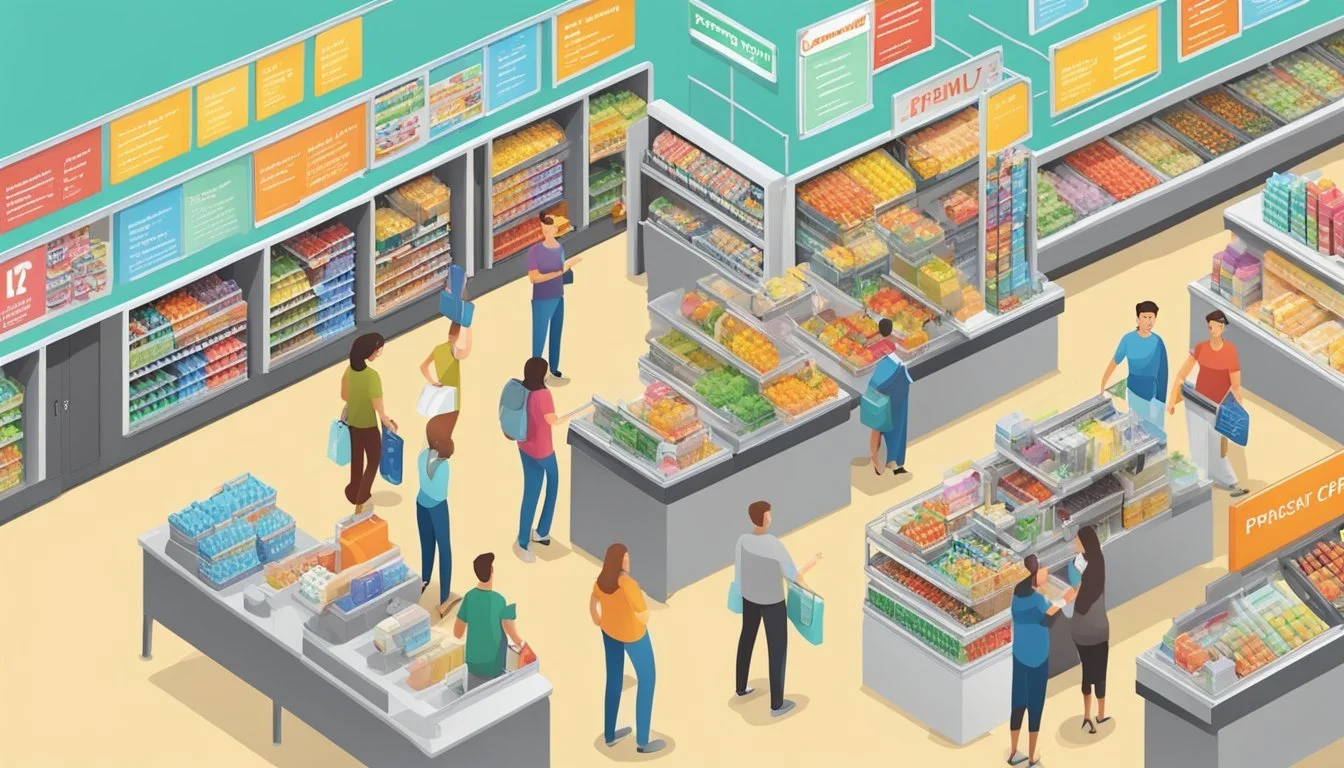Save Mart vs Stop & Shop
A Comprehensive Comparison of Prices, Selection, and Service
Grocery shopping can be a significant expense for many households, making the choice of store crucial for budget-conscious consumers. Save Mart and Stop & Shop are two prominent grocery chains that serve different regions of the United States. While both offer a wide range of products, they differ in pricing, selection, and overall shopping experience.
Stop & Shop tends to have higher prices compared to some competitors, but offers a broad selection of specialty items and quality produce. The chain has been in operation for over a century, building a strong presence in the Northeast with more than 400 locations. Save Mart, primarily located in California and Nevada, focuses on providing fresh, locally-sourced products at competitive prices.
Comparing these two stores involves considering factors beyond just price. Customer service, store layout, loyalty programs, and product quality all play a role in determining which grocery store better meets shoppers' needs. As consumers become more discerning, understanding the strengths of each chain can help make informed decisions about where to spend grocery dollars.
Overview of Save Mart and Stop & Shop
Save Mart and Stop & Shop are two prominent supermarket chains in the United States. Save Mart operates primarily in California and Nevada, with over 200 stores serving communities in these western states.
Stop & Shop has a strong presence on the East Coast, boasting more than 400 locations throughout the Northeast. This grocery chain has been in business for over a century, offering a wide range of products from fresh produce to specialty cheeses.
Both companies provide essential grocery shopping services to their respective regions. Save Mart focuses on delivering fresh, quality products at competitive prices to its customers in the West.
Stop & Shop, owned by Ahold Delhaize, is part of a larger family of grocery brands including Giant and Hannaford. It offers a comprehensive shopping experience with various departments and services.
While Save Mart caters to a more localized market, Stop & Shop serves a broader customer base across multiple states. Both chains strive to meet the diverse needs of their shoppers through product selection and pricing strategies.
Customer experiences may vary between the two stores due to regional differences and individual store management. Factors such as product availability, pricing, and store layout can influence shopper preferences in their respective markets.
Geographic Presence and Accessibility
Save Mart and Stop & Shop have distinct regional footprints that shape their accessibility for customers. Their store locations and density vary significantly, impacting shopping convenience for consumers in different parts of the country.
Location and Store Density
Save Mart operates primarily in California's Central Valley and Northern Nevada. The chain has around 200 stores concentrated in these regions, providing a strong local presence. Stop & Shop, in contrast, maintains over 400 stores across the Northeast, including states like Massachusetts, Connecticut, Rhode Island, New York, and New Jersey.
Stop & Shop's larger store count and broader regional coverage give it an edge in terms of overall accessibility for East Coast shoppers. The chain's dense network of locations in urban and suburban areas makes it a convenient option for many Northeastern customers.
Convenience for Shoppers
Save Mart's focused presence in California and Nevada offers frequent shopping options for customers in those areas. Shoppers in cities like Fresno, Modesto, and Reno likely have a Save Mart within easy reach.
Stop & Shop's extensive Northeast footprint translates to high convenience for a large population base. Many customers in states like Massachusetts and Connecticut can find multiple Stop & Shop locations nearby, reducing travel time for grocery runs.
The chains' differing geographic focuses mean that convenience largely depends on a shopper's location. East Coast residents will find Stop & Shop more accessible, while those in central California and northern Nevada may prefer Save Mart's local presence.
Range of Products and Quality
Save Mart and Stop & Shop both offer extensive selections of groceries, but their product ranges and quality can vary. Each store has its strengths in different categories, catering to diverse customer preferences.
Produce and Meat Selection
Save Mart prides itself on its fresh produce section, featuring a wide array of locally sourced fruits and vegetables. Their meat department offers high-quality cuts, including prime beef and organic poultry options. Stop & Shop also maintains a competitive edge with its produce selection, emphasizing seasonal offerings and regional favorites.
The meat counter at Stop & Shop provides a variety of choices, from budget-friendly options to premium selections. Both stores strive to ensure freshness, but Save Mart often receives higher marks for the overall quality of its produce and meat.
Organic and Specialty Items
Stop & Shop has made significant strides in expanding its organic product line. Customers can find a growing selection of organic produce, dairy, and pantry staples. The store also features a dedicated section for specialty cheeses and gourmet items.
Save Mart, while offering organic options, tends to focus more on conventional products. However, they excel in providing specialty items that reflect regional tastes and cuisines. Their international food aisle is particularly well-stocked, offering unique products that may be harder to find at Stop & Shop.
Both stores carry gluten-free and allergen-friendly options, catering to customers with specific dietary needs. Save Mart and Stop & Shop continually update their product ranges to meet changing consumer demands and health trends.
Pricing and Savings Opportunities
Save Mart and Stop & Shop employ different strategies to offer competitive prices and savings to customers. Both chains provide various ways for shoppers to maximize their grocery budgets through discounts, loyalty programs, and sales.
Everyday Prices and Discounts
Save Mart focuses on offering competitive everyday prices across its stores. They frequently run buy-one-get-one deals on popular items. Stop & Shop tends to have slightly higher regular prices but makes up for it with deeper discounts on sale items.
Save Mart's "Low Price Lock" program keeps prices steady on staple goods for extended periods. Stop & Shop counters with their "Great Value" store brand, which offers savings of 20-30% compared to national brands.
Both chains provide weekly circular ads showcasing current deals. Save Mart's circular typically features more produce specials, while Stop & Shop emphasizes packaged goods discounts.
Loyalty Programs and Digital Coupons
Save Mart's "Save Smart Rewards" program offers personalized deals and fuel points. Members earn 1 point per dollar spent, redeemable for discounts on groceries or gas.
Stop & Shop's "Go Rewards" program provides similar benefits. Members get access to exclusive digital coupons and earn points for discounts on gas or groceries.
Both chains offer mobile apps for easy access to digital coupons and rewards. Stop & Shop's app includes a scan-as-you-shop feature for faster checkout. Save Mart's app lets users build shopping lists and view weekly ads.
Comparing Sale Prices with Competitors
Save Mart and Stop & Shop regularly adjust prices to stay competitive with rivals like Walmart and Aldi. Save Mart often matches Walmart's prices on key items in overlapping markets.
Stop & Shop's "Price Match Promise" guarantees to match competitors' advertised prices on identical items. This policy helps them compete with low-price leaders like Aldi.
Both chains offer deeper discounts on private label products compared to national brands. Save Mart's "Sunny Select" and Stop & Shop's "Nature's Promise" brands provide quality alternatives at lower price points.
Sale cycles typically run weekly, with the deepest discounts appearing on Wednesdays or Thursdays. Savvy shoppers can save by timing their trips to coincide with these sales.
Shopping Experience and Customer Service
Save Mart and Stop & Shop offer distinct shopping experiences. Both chains prioritize customer satisfaction but differ in their approaches to store layout, checkout efficiency, and service quality.
Cleanliness and Store Layout
Save Mart emphasizes a clean, organized shopping environment. Aisles are typically wide and well-lit, making navigation easier for shoppers. Products are grouped logically, with clear signage guiding customers to their desired items.
Stop & Shop also maintains clean stores but often features a more compact layout. Their stores frequently incorporate specialized sections like natural foods or international cuisine. This arrangement can appeal to shoppers seeking variety but may feel cramped during busy periods.
Both chains regularly sanitize high-touch areas and provide hand sanitizer stations throughout the store.
Checkout Efficiency
Save Mart invests in technology to speed up the checkout process. Many locations offer self-checkout options alongside traditional lanes. Their mobile app allows customers to create shopping lists and access digital coupons for quicker transactions.
Stop & Shop similarly provides self-checkout kiosks and staffed registers. They've implemented scan-as-you-shop technology in some stores, enabling customers to bag items as they go, further reducing checkout times.
Wait times can vary at both chains depending on store traffic and staffing levels.
Customer Service Ratings
Save Mart receives generally positive feedback for its customer service. Employees are often praised for their helpfulness and product knowledge. The chain emphasizes staff training to ensure consistent service across locations.
Stop & Shop's customer service ratings are more mixed. Some shoppers report friendly, attentive staff, while others note inconsistencies between stores. The chain has implemented customer feedback programs to address service issues and improve shopper satisfaction.
Both stores offer loyalty programs, providing personalized deals and rewards to frequent shoppers. These programs contribute to overall customer satisfaction and encourage repeat visits.
Market Position and Consumer Perception
Save Mart and Stop & Shop occupy distinct positions in the grocery store landscape. Their brand recognition and customer perceptions vary based on regional presence, store experiences, and consumer feedback.
Brand Awareness and Loyalty
Save Mart has cultivated a loyal following in its primary markets, particularly in California's Central Valley. The company's focus on fresh produce and local partnerships resonates with health-conscious shoppers.
Stop & Shop boasts stronger brand recognition on the East Coast. Its long history and widespread presence contribute to high awareness among consumers in states like Massachusetts and New York.
Both chains face competition from larger national players. Walmart's low prices and extensive reach pose challenges for regional grocers like Save Mart and Stop & Shop.
Consumer Reports and Surveys
Recent consumer surveys reveal mixed perceptions of Stop & Shop. A Consumer Reports study found only 27% of surveyed customers rated Stop & Shop as "superior" overall.
Save Mart fares somewhat better in customer satisfaction metrics. The chain's emphasis on fresh, local products earns praise from shoppers seeking quality produce.
Market Basket, a regional competitor, often outperforms both Save Mart and Stop & Shop in customer surveys. Its combination of low prices and employee-friendly policies creates a positive image among consumers.
Consumer feedback on podcasts and review sites highlights price as a key factor. Many shoppers perceive Walmart as offering better value compared to traditional grocers like Stop & Shop.
Value-Added Services
Save Mart and Stop & Shop offer convenient services beyond basic grocery shopping. These include grocery delivery options and prepared food selections to cater to customers' varying needs and preferences.
Grocery Delivery Options
Save Mart partners with Instacart to provide home delivery services. Customers can place orders online or through the Instacart app for same-day delivery.
Stop & Shop offers its own delivery service called Peapod. Shoppers can schedule deliveries or arrange for curbside pickup at select locations.
Both stores charge delivery fees, which may vary based on order size and delivery time. Stop & Shop's Peapod service often provides more flexible delivery windows compared to Save Mart's Instacart option.
Prepared Foods and Deli
Save Mart features a deli counter with sliced meats and cheeses. Many locations offer rotisserie chickens and pre-made sandwiches for quick meals.
Stop & Shop typically has a larger prepared foods section. Their stores often include hot food bars, salad bars, and a wider variety of ready-to-eat meals.
Stop & Shop's delis tend to have more extensive offerings, including specialty sandwiches and party platters. Some locations even have in-store seating areas for customers to enjoy their prepared meals.
Both chains provide catering services for events and gatherings, though Stop & Shop generally offers more diverse menu options.
Comparative Analysis
Save Mart and Stop & Shop operate in different regions, but both face competition from national chains. This analysis examines how they stack up against each other and larger competitors.
Save Mart vs Stop & Shop Head-to-Head
Save Mart operates primarily in California, while Stop & Shop serves the Northeast. Both offer a full range of grocery products, but differ in pricing and selection.
Stop & Shop tends to have higher prices compared to discount chains. A sample comparison showed Stop & Shop's prices were about 20% higher than Walmart for basic items.
Save Mart aims for competitive pricing in its market. However, specific price comparisons between Save Mart and Stop & Shop are challenging due to their separate geographic regions.
In terms of quality, Stop & Shop received lower customer satisfaction ratings in recent surveys. Only 27% of surveyed customers rated it as "superior" overall.
Competition with National Chains
Both Save Mart and Stop & Shop face intense competition from national chains like Walmart, Kroger, and Whole Foods.
Walmart consistently offers lower prices, typically 12-30% below average. This poses a significant challenge for regional chains like Save Mart and Stop & Shop.
Whole Foods and Trader Joe's compete on quality and specialty offerings rather than price. They appeal to different customer segments than Save Mart or Stop & Shop.
Amazon's entry into the grocery market through Whole Foods and online delivery has increased pressure on traditional supermarkets to innovate and improve their e-commerce capabilities.
Discount stores and warehouse clubs also compete for budget-conscious shoppers, forcing Save Mart and Stop & Shop to find ways to differentiate themselves beyond just price.
Conclusion and Final Recommendations
Save Mart and Stop & Shop both offer unique advantages for grocery shoppers. Save Mart tends to have lower prices on many items, potentially leading to greater savings on your grocery bill. Their produce section is often praised for freshness and quality.
Stop & Shop excels in convenience, with numerous locations and a user-friendly layout. Their loyalty program provides additional ways to save money. Many customers appreciate their wide selection of organic and specialty products.
For budget-conscious shoppers, Save Mart may be the better choice. Those prioritizing a diverse product range and convenient shopping experience might prefer Stop & Shop.
Consider trying both stores to compare prices on items you frequently purchase. Pay attention to weekly sales and use loyalty programs to maximize savings. Remember that prices and quality can vary by location and season.
Ultimately, the best choice depends on your individual needs, budget, and preferences. Both Save Mart and Stop & Shop aim to provide value to their customers in different ways.










